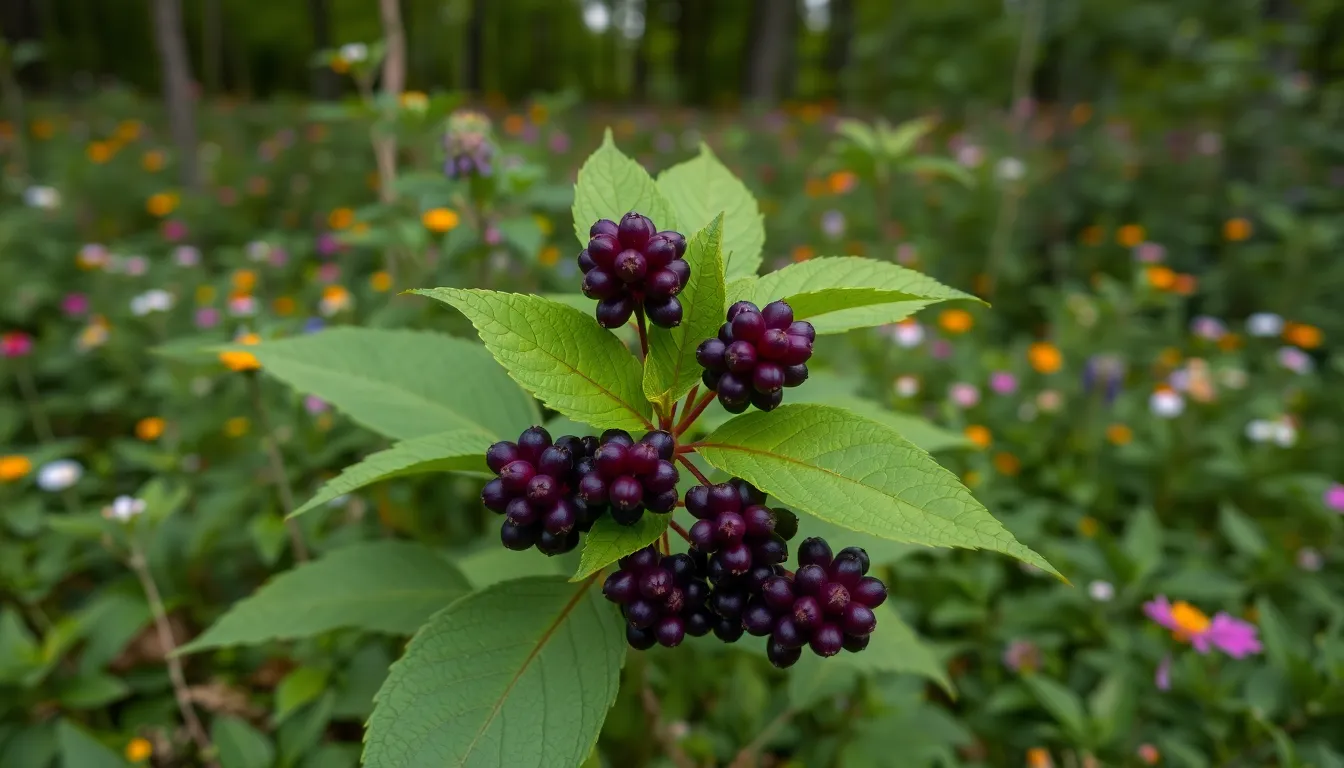
Poke Plant Medicinal Uses: Unlocking Nature’s Healing Secrets
In the world of herbal remedies, the poke plant often gets a bad rap. With its striking appearance and a reputation for being a bit too wild for comfort, many might overlook its medicinal potential. But hold onto your hats—this plant packs a punch! From ancient healing traditions to modern herbal practices, poke has carved out a niche that’s hard to ignore.
Poke Plant Medicinal Uses
Poke plant, scientifically known as Phytolacca americana, is recognized for its distinctive tall stem and large green leaves. Native to North America, it thrives in various environments, often appearing in gardens and along roadsides. The plant produces clusters of small, greenish-white flowers, which later develop into dark purple berries. Many people encounter poke plant but may not realize its historical significance in traditional medicine.
Historical uses reveal poke plant’s versatility. Indigenous tribes utilized its roots and leaves for treating ailments such as inflammation and rheumatism. Modern herbalists incorporate the plant into remedies aimed at various conditions, including respiratory infections and joint pain. The leaves and berries contain bioactive compounds that may contribute to their medicinal properties.
Caution remains essential regarding poke plant. Consumption of raw berries or large quantities of the plant can lead to toxicity. Symptoms may include gastrointestinal distress or more severe reactions. Proper preparation and dosage ensure safe utilization in herbal practices.
Research highlights poke plant’s potential. Some studies indicate its anti-inflammatory and antiviral effects, aligning with traditional uses. The plant’s constituents, such as phytolaccatoxin, warrant further investigation to fully understand their therapeutic benefits. Continuing to explore poke plant could enhance its acceptance and understanding within modern herbal medicine.
Historical Uses of Poke Plant

Poke plant, or Phytolacca americana, boasts a rich history in medicinal applications across cultures. Indigenous tribes first recognized its healing properties, using roots and leaves to treat conditions like inflammation and rheumatism.
Traditional Medicine Practices
Traditional medicine practices highlight the poke plant’s diverse uses. Many Indigenous healers prepared infusions from its leaves for treating fevers or skin conditions. Additionally, some tribes applied poultices made from poke roots to manage pain and soreness. Other herbalists utilized the plant for its potential antiviral and anti-inflammatory properties, aligning with contemporary applications. Such traditions laid the groundwork for modern herbalists, who still incorporate the poke plant into today’s remedies.
Cultural Significance
Cultural significance surrounds the poke plant in various communities. Many Indigenous tribes regard it as a valuable medicinal resource, representing a connection to ancestral healing wisdom. Folklore often features the poke plant in stories that emphasize respect for nature and its gifts. Communities celebrate its presence in the landscape, recognizing it as an integral part of local ecosystems. Such historical and cultural contexts enhance the understanding of poke plant’s enduring significance in herbal medicine.
Medicinal Properties
The poke plant exhibits notable medicinal properties, underscored by its historical and contemporary applications in herbal medicine.
Active Compounds
Poke plant extracts contain various active compounds critical to its medicinal potential. Phytolaccatoxin is among these compounds and possesses notable bioactivity. Researchers highlight the presence of flavonoids and saponins within the leaves and berries, contributing to anti-inflammatory and antiviral properties. Essential oils also emerge from poke plant constituents, which enhance its therapeutic profile. Studies suggest that these compounds interact synergistically, promoting health benefits while warranting cautious use due to potential toxicity. Ensuring proper preparation methods allows for safer application of these powerful constituents without adverse effects.
Potential Health Benefits
Poke plant offers several potential health benefits, drawing from its historical use. Infusions made from the leaves may alleviate respiratory infections while poultices prepared with roots target pain and inflammation. Some herbalists utilize poke to manage joint pain, aligning with traditional practices. The anti-inflammatory properties lend themselves to treating conditions like arthritis, enhancing mobility and comfort. Additionally, its antiviral effects suggest a role in combating viral infections. Caution remains vital whenever using poke, as high doses can lead to gastrointestinal issues. Understanding these potential benefits allows consumers to appreciate the poke plant’s significance in herbal remedies.
Applications in Modern Herbalism
Poke plant finds diverse applications in modern herbal practices. Its historical uses influence contemporary herbalism, offering remedies for various ailments.
Dosage and Preparation
Herbalists recommend specific preparations to maximize poke plant’s benefits. Typically, infusions involve steeping dried leaves in hot water for 10 to 15 minutes. A common dosage for adults is one cup of infusion daily. For tinctures, a concentration of 1:5 is common, with a dosage of 1 to 2 ml taken three times a day. Always start with the lowest effective dose, gradually increasing as needed, while closely monitoring for reactions. Proper preparation techniques minimize toxicity risks, ensuring safe consumption.
Safety and Precautions
Safety considerations are crucial when using poke plant remedies. Toxicity exists, particularly in raw berries and large amounts of raw plant material. Symptoms such as nausea, vomiting, or diarrhea may occur with excessive consumption. Pregnant or breastfeeding individuals should avoid using poke plant due to potential harmful effects. Consulting a qualified herbalist or healthcare professional helps ensure safe usage. Persons with existing medical conditions or those taking medications need guidance to prevent harmful interactions.
Conclusion
The poke plant stands as a testament to the intersection of tradition and modern herbalism. Its rich history in Indigenous healing practices highlights its potential for addressing various health concerns. With its active compounds offering anti-inflammatory and antiviral effects, the poke plant continues to be a valuable resource in contemporary remedies.
However, it’s essential to approach its use with caution due to potential toxicity. Proper preparation and consultation with knowledgeable practitioners can ensure safe and effective utilization. As awareness grows about the poke plant’s benefits, it may gain the recognition it deserves within the realm of herbal medicine. Embracing this plant not only connects individuals to ancient wisdom but also fosters a deeper respect for nature’s healing gifts.



